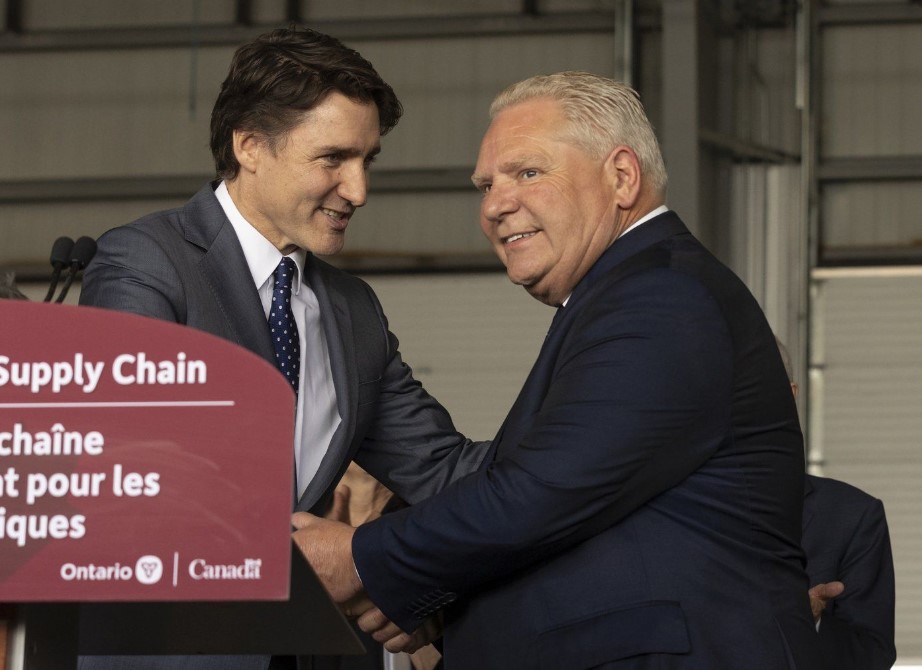Canadians struggling with rising food costs need government help, advocates say
Posted July 23, 2022 6:00 am.
Last Updated July 23, 2022 5:48 pm.
With the cost of living rising at the fastest pace in decades, Canadians struggling to put food on the table are turning to community organizations for help.
The Community Food Centre in Stratford, Ont., says foot traffic has doubled at its discounted produce markets, where local produce is sold at lower prices than grocery stores. According to the centre, customers are spending twice as much at the market as they used to a few months ago.
“People come who never used to come,” said Derek Barnes, a community engagement facilitator. “And people for the first time, they’re saying, ‘these prices might be too much for me.’”
Food prices in June were 8.8 per cent higher than a year ago. With the cost of everything from fresh produce to meat to baked goods becoming more unaffordable, and incomes lagging behind inflation, community advocates and experts are concerned about the affect on people living on the margins.
The annual inflation rate in June was 8.1 per cent, the highest it’s been since 1983.
RELATED: Canada inflation hits 8.1 per cent year over year in June
In comparison, average hourly wages rose by 5.2 per cent.
Barnes said their organization has been focused on filling bellies, particularly during the pandemic, but now it’s time for governments to ensure people have sufficient incomes so that they don’t need to rely on assistance from emergency food organizations.
“We want people in our community not just surviving, but thriving,” Barnes said.
Valerie Tarasuk, a professor of nutritional sciences at the University of Toronto, said food insecurity has likely only become worse with inflation on the rise.
“We have to deal with the incomes of people who are food insecure,” Tarasuk said. “There’s no way our food charity system can deal with this problem.”
These measures should be directed at Canadians on fixed incomes and low-wage earners, she added.
Most provincial governments don’t index social assistance benefits to inflation. And while federal programs are indexed, it takes time for inflation to be reflected on people’s cheques.
The NDP has called on the federal government to provide immediate relief by doubling the GST tax credit and boosting the Canada Child Benefit by $500.
Both benefits are means-tested, so these proposed measures would send additional money to Canadians with low to moderate incomes.
The NDP has said those benefits could be financed through additional taxes on corporations that have seen profits rise during the pandemic.
But the Liberals have rejected that call.
Former parliamentary budget officer Kevin Page said the Liberal government’s last budget does include substantial increases in support, although it was tabled before inflation rose so dramatically.
The 2022 budget included several measures meant to improve affordability: a 10 per cent increase to Old Age Security pensions for Canadians over the age of 75 and a one-time $500 housing affordability payment to low-income Canadians.
However, Page said pressure on the federal government to provide inflation-related relief will continue to mount.
“Providing transitional support for vulnerable people in an environment (where) you have high and rising inflation, people falling behind, I think politicians can’t turn a cheek to that. They shouldn’t,” Page said.
Page said targeted measures, such as boosting the GST tax credit, would be appropriate. At the same time, policymakers need to be cautious of not going “too far beyond that,” he said.
Randall Bartlett, Desjardins’ director of Canadian economics, said inflation is undoubtedly impacting low-income Canadians the most.
According to a Statistics Canada survey conducted in the spring, 85 per cent of Canadians in the bottom 20 per cent of income earners reported their ability to meet day-to-day expenses has been impacted a lot or somewhat.
However, Bartlett cautioned against boosting income transfers, saying that would fuel more inflation.
“Transfers to low-income households are the most inflationary type of transfer, as they largely go toward consumption,” the economist said in an email. “That’s why governments tend to lean on this as a stimulus tool during recessions.”
Instead, Bartlett said it would be best for the federal government to stick with the plan it laid out in the budget, “in order to give certainty to the Bank of Canada around the fiscal policy environment while still provide ongoing support to vulnerable Canadians.”








